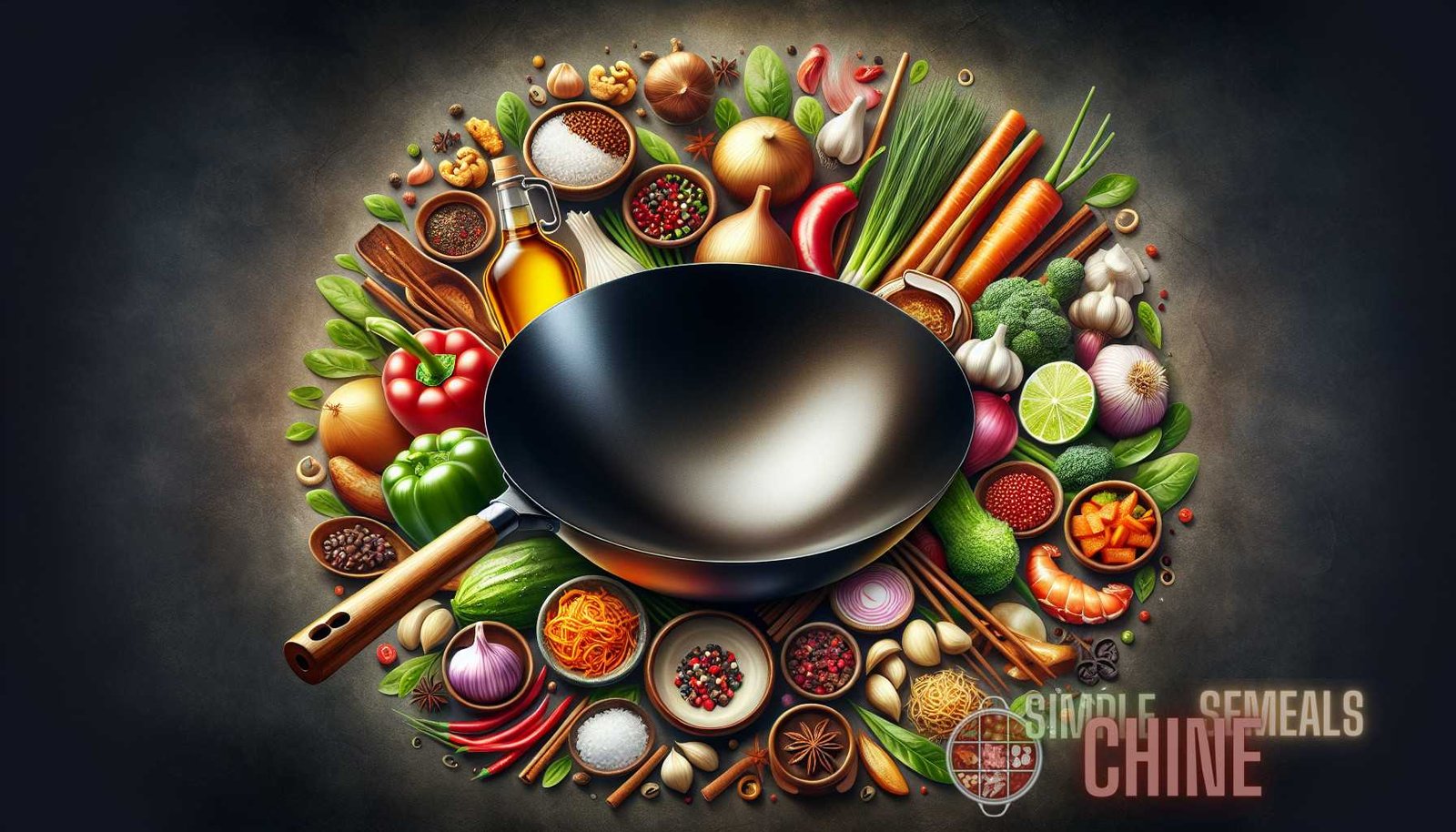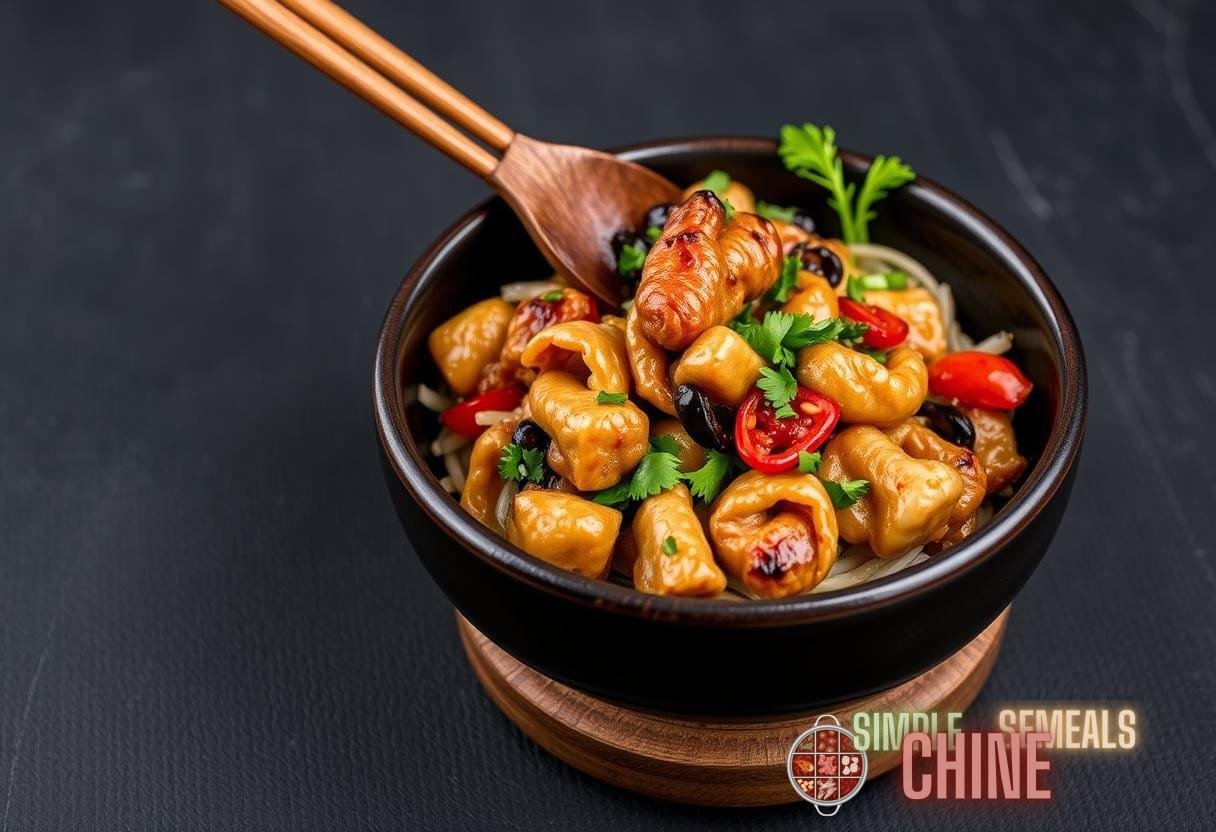Introduction
Chinese cuisine is renowned for its bold flavors, unique ingredients, and exquisite cooking techniques. One of the essential tools in Chinese cooking is the wok, a versatile and efficient pan that allows for quick stir-frying, deep-frying, and steaming. Mastering the wok can take your Chinese cooking to the next level, enabling you to create delicious dishes that capture the true essence of Chinese cuisine. In this article, we will share essential tips and techniques to help you master the art of Chinese cooking with a wok.
The History of the Wok
Before diving into the tips and techniques, it’s important to understand the history and significance of the wok. The wok has been used in Chinese cooking for over 2,000 years and is considered one of the most important culinary tools in Chinese cuisine. Its unique shape and design allow for even heat distribution, making it perfect for high-heat cooking methods like stir-frying.
The word “wok” actually comes from the Cantonese word “wok” or “wahk,” which means “cooking pot.” The wok originated in China’s Han Dynasty and was initially made from cast iron. Over time, the design evolved, and woks are now commonly made from carbon steel, stainless steel, or non-stick materials.
The shape of the wok also plays a significant role in its functionality. With its high, sloping sides and a small bottom surface area, the wok allows for efficient heat distribution and quick cooking times. The rounded bottom of a traditional wok fits perfectly on the stove, and the flat bottom woks are suitable for electric and induction stoves.
Choosing the Right Wok
When it comes to getting the best results in Chinese cooking, choosing the right wok is essential. Here are some factors to consider when selecting a wok for your kitchen:
- Material: Carbon steel woks are the most commonly used in Chinese cooking because they heat up quickly and distribute heat evenly. Stainless steel woks are durable and easy to maintain, but they may not heat up as quickly. Non-stick woks are suitable for those who prefer low-oil or oil-free cooking.
- Size: Woks come in various sizes, ranging from 12 to 16 inches in diameter. Choose a size that suits the number of people you typically cook for. A 14-inch wok is a good size for most home cooks.
- Shape: Traditional round-bottom woks are ideal for gas stoves, as they allow for maximum heat distribution. Flat-bottom woks are suitable for electric and induction stoves, providing a stable cooking surface.
- Handles: Woks typically have two short handles or one long handle, known as a helper handle. Consider your cooking style and preferences when choosing the handle type.
Preparing Your Wok
Before using your new wok, it’s essential to properly prepare it to ensure optimal cooking performance. Here’s how to season your wok:
- First, wash the wok with warm water and a small amount of mild dish soap. Use a sponge or brush to remove any protective coating that may be present.
- Place the wok over medium heat and add a small amount of vegetable oil (about 2 tablespoons) to the wok.
- Using tongs or a folded paper towel, spread the oil evenly across the cooking surface and up the sides of the wok.
- Continue heating the wok for about 10-15 minutes or until the surface becomes darkened and starts to smoke. This process helps to season or create a natural non-stick coating on the wok.
- Turn off the heat and let the wok cool completely before rinsing it with warm water. Avoid using soap to clean the wok after seasoning, as it may remove the natural non-stick coating.
- Wipe the wok dry with a clean, lint-free cloth or paper towel, and apply a thin layer of oil to prevent rusting.
Mastering the Wok Techniques
Now that you have your wok ready, it’s time to dive into the essential techniques for mastering Chinese cooking. Here are some tips to get you started:
1. Stir-Frying

Stir-frying is perhaps the most well-known and commonly used cooking technique in Chinese cuisine. It involves frying small, bite-sized ingredients over high heat while continuously stirring or tossing them in the wok. Here’s how to stir-fry like a pro:
- Preheat your wok over high heat to ensure it reaches the desired cooking temperature.
- Add oil to the preheated wok and swirl it around to coat the sides.
- Start by cooking the ingredients that take the longest to cook, such as meat or root vegetables.
- Add the rest of the ingredients, starting with the ones that require less cooking time.
- Stir or toss the ingredients constantly to ensure even cooking and to prevent sticking.
- Season with sauces, spices, or seasonings of your choice.
- Finish by adding any delicate ingredients, such as herbs or leafy greens, and stir-frying for a few more seconds.
- Serve your stir-fried dish immediately to enjoy it at its best.
2. Deep-Frying
Deep-frying is another popular cooking technique in Chinese cuisine, resulting in crispy and delicious dishes. Here are some tips for achieving the perfect deep-fried dish:
- Fill your wok with enough oil to fully submerge the ingredients you are frying. Use an oil with a high smoke point, such as peanut or vegetable oil.
- Preheat the oil to the desired temperature, usually around 350°F to 375°F (175°C to 190°C).
- Make sure the ingredients are dry before adding them to the oil to prevent oil splatters.
- Add the ingredients to the hot oil in small batches to maintain the oil temperature.
- Use a slotted spoon or mesh strainer to remove the fried ingredients from the oil and place them on a paper towel-lined plate to drain excess oil.
- Season the dish with salt or any desired spices or seasonings.
- Serve the deep-fried dish immediately to enjoy it while it’s hot and crispy.
3. Steaming
Steaming is a gentle cooking technique used to retain the natural flavors and textures of the ingredients. Here’s how to steam in a wok:
- Add water to the wok, filling it about one-third full.
- Place a steaming rack or a heatproof plate with raised edges into the wok.
- Bring the water to a simmer over medium heat.
- Arrange the ingredients to be steamed on the steaming rack or plate without overcrowding.
- Cover the wok tightly with a lid to trap the steam.
- Steam the ingredients for the recommended cooking time, depending on the type of food.
- Check for doneness by inserting a knife or toothpick into the thickest part of the food. It should go in easily with no resistance.
- Remove the steamed ingredients from the wok and season with soy sauce, sesame oil, or other desired sauces or seasonings.
Tips for Successful Chinese Cooking
In addition to mastering the wok techniques mentioned above, here are some general tips for successful Chinese cooking:
- Preparation is Key: Before you start cooking, make sure all your ingredients are prepped and ready to go. Chinese cooking is fast-paced, and having everything at hand will help you stay organized.
- Keep it Hot: Chinese cooking requires high heat. Preheat your wok and keep the heat on high throughout the cooking process to achieve the desired results.
- Use the Right Oil: For stir-frying, choose an oil with a high smoke point, such as peanut, vegetable, or canola oil. These oils can withstand the high heat without burning and impart a neutral flavor to the dish.
- Balance Flavors: Chinese cuisine is all about balancing the five key flavors – sweet, sour, salty, bitter, and umami. Experiment with different sauces, spices, and seasonings to achieve the perfect balance in your dishes.
- Work in Batches: When stir-frying or deep-frying, it’s important not to overcrowd the wok. Cook in small batches to ensure even cooking and to prevent the ingredients from stewing in their own juices.
- Add Cornstarch Slurry: To thicken sauces or create a glossy finish, mix cornstarch with water to form a slurry and add it to your stir-fried dishes. This technique is commonly used in Chinese cooking to create a thick and velvety texture.
- Discover New Ingredients: Chinese cuisine is rich in unique ingredients and flavors. Explore your local Asian grocery store to find new ingredients like Chinese mushrooms, fermented sauces, and exotic vegetables to add depth and complexity to your dishes.
- Keep it Simple: Chinese cooking is not about complicated techniques or fancy ingredients. It’s about using fresh, high-quality ingredients and allowing them to shine. Keep your dishes simple and let the flavors speak for themselves.
Conclusion
Mastering the wok is the key to unlocking the true potential of Chinese cooking. By understanding the history and significance of the wok, choosing the right wok, properly preparing it, and learning essential cooking techniques, you can take your Chinese cooking to new heights. Remember to practice, experiment, and have fun exploring the vibrant and diverse world of Chinese cuisine with your trusty wok!
External link
For more information on the history of the wok, please visit Wikipedia.



